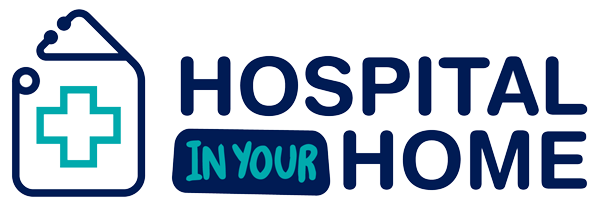How Hospital at Home Companies Are Collaborating with Traditional Hospitals

In the ever-evolving landscape of healthcare, hospital at home companies are emerging as game-changers, offering innovative solutions that promise to redefine patient care.
These companies, operating at the intersection of technology and healthcare, are forging partnerships with traditional hospitals to bring hospital-level care into the comfort of patients’ homes.
This model not only signifies a shift in how healthcare services are delivered but also highlights a growing trend toward more personalized and patient-centered care.
Understanding Hospital at Home
The concept of hospital at home is simple yet revolutionary. It involves providing patients with acute, hospital-level care in their own homes rather than in traditional hospital settings.
This model has its roots in the early 1990s but has gained significant traction in recent years, thanks to advancements in technology and a greater focus on patient-centric care.
At its core, hospital at home aims to offer a safer, more comfortable, and often more effective alternative to inpatient care.
By leveraging remote monitoring technologies, digital health platforms, and a multidisciplinary team of healthcare professionals who visit patients at home, this model ensures that high-quality care is accessible outside the hospital walls.
The Rise of Hospital at Home Companies
Hospital at home companies are at the forefront of this healthcare revolution. These organizations utilize cutting-edge technologies, such as telehealth, wearable devices, and AI-powered health analytics, to monitor patients’ health in real-time, administer treatments, and communicate with healthcare providers.
These companies is their role in reducing healthcare costs. By treating patients at home, they help mitigate the high costs associated with traditional hospital stays, including overhead expenses and the risk of hospital-acquired infections, which further underscores their value proposition in the healthcare ecosystem.
The Case for Collaboration
The collaboration between hospital at home companies and traditional hospitals is not just beneficial but necessary.
Hospitals, facing ever-increasing pressures such as bed shortages, staffing issues, and financial constraints, find a viable solution in the hospital at home model to alleviate some of these challenges.
From a patient’s perspective, the benefits are manifold. Receiving care at home can lead to better health outcomes, higher levels of satisfaction, and lower risks of complications.
Moreover, it allows patients to remain in a familiar environment, surrounded by their loved ones, which can significantly enhance their overall well-being and recovery process.
How Collaborations Work
The partnership between hospital at home companies and traditional hospitals typically involves a shared care model.
Hospitals identify patients who are eligible for home-based care and refer them to a hospital at home company.
This company then takes over the patient’s care, providing all necessary medical services at home, from diagnostics to treatment to recovery support.
This model requires seamless integration of services and technologies to ensure that patient care is coordinated and effective.
It also relies on clear communication channels between all parties involved, including the patient, their family, the hospital at home team, and the referring hospital.
Operational Challenges and Solutions
The integration of hospital at home companies with traditional hospitals presents a set of operational challenges that require innovative solutions.
Regulatory hurdles are among the most significant obstacles, as healthcare providers navigate the complex web of healthcare laws and policies that vary by region.
Ensuring compliance while delivering high-quality care outside the traditional hospital setting demands a meticulous approach to healthcare regulation.
Another challenge lies in maintaining continuity of care, especially in emergency situations where immediate hospitalization might become necessary.
Hospital at home companies address this by establishing robust protocols for rapid response and transfer to hospital facilities when required, ensuring patient safety at all times.
Technology gaps pose a further challenge, particularly in ensuring all patients have access to the necessary internet and telecommunication services.
Solutions include deploying mobile health units equipped with Wi-Fi and providing patients with pre-configured tablets or monitoring devices, ensuring uninterrupted care and communication.
The Future of Hospital at Home Collaborations
Looking ahead, the future of collaborations between hospital at home companies and traditional hospitals appears promising.
With advancements in digital health technologies and a growing emphasis on patient-centered care, these partnerships are set to become a cornerstone of modern healthcare delivery.
Emerging trends, such as the integration of artificial intelligence for personalized care plans and the use of virtual reality for patient education, are poised to enhance the hospital at home model further.
Additionally, the expansion of these services to cover a broader range of conditions, including chronic disease management and post-surgery care, will increase their relevance and accessibility.
As healthcare continues to evolve, the synergy between hospital at home companies and traditional hospitals will play a pivotal role in shaping a more resilient, efficient, and patient-focused healthcare system.
The stories of successful collaborations and the positive feedback from patients and healthcare professionals alike underscore the transformative potential of this model, offering a glimpse into a future where high-quality healthcare is not confined to the walls of a hospital.
Conclusion
In conclusion, the synergy between hospital-at-home services and traditional hospitals signifies a groundbreaking evolution in the healthcare sector, aiming to deliver more personalized, efficient, and patient-centric care.
Through the adoption of advanced technologies and groundbreaking care models, these collaborations are addressing the critical issues faced by conventional healthcare systems, such as bed shortages and rising costs, while paving the way for a future where healthcare is accessible, safe, and customized to meet the specific needs of each patient.
Despite facing logistical and operational challenges, innovative solutions are actively being developed to ensure compliance, continuity of care, and equitable access to technology. Looking ahead, the partnership between these sectors will play a vital role in creating a healthcare system that is robust, efficient, and fundamentally patient-focused.
The positive feedback from both patients and healthcare professionals highlights the transformative impact of the hospital-at-home model, envisaging a future where high-quality healthcare extends beyond traditional hospital settings into the comfortable and familiar environments of patients’ homes.
If you are considering how the hospital-at-home model could enhance your healthcare services, or if you face challenges in implementing this innovative approach, we encourage you to reach out to Hospital in Your Home US.
Hospital in Your Home AU expertise and successful track record in this field position us uniquely to help you navigate the complexities of hospital-at-home implementation, ensuring that your patients receive the highest quality care in the safety and comfort of their own homes.
FAQs
How do hospital at home companies collaborate with traditional hospitals?
Hospital at home companies partner with traditional hospitals to extend care services directly into patients’ homes. This collaboration allows patients to receive hospital-level care, including monitoring, treatments, and daily physician visits, without the need to be physically present in the hospital.
What types of services do hospital at home programs typically offer?
Hospital at home programs offer a wide range of services similar to those available in traditional hospital settings, including acute care, post-operative care, chronic disease management, and rehabilitation services. These services are provided through a combination of remote monitoring, telehealth visits, and in-home visits by healthcare professionals.
How does technology enable the collaboration between hospital at home companies and traditional hospitals?
Technology plays a crucial role in facilitating the collaboration between hospital at home companies and traditional hospitals. Through telehealth platforms, electronic health records, and remote patient monitoring devices, care teams can continuously assess patient health, respond to emergencies, and adjust treatments in real time.
What are the benefits of hospital at home programs for patients?
Hospital at home programs offer numerous benefits for patients, including increased comfort, reduced risk of hospital-acquired infections, and the ability to remain close to family and loved ones. Additionally, these programs often lead to higher patient satisfaction, improved health outcomes, and lower healthcare costs.
How do hospital at home companies ensure patient safety and quality of care?
Hospital at home companies ensure patient safety and quality of care by implementing strict clinical protocols, using advanced monitoring technology, and employing skilled healthcare professionals who are trained to deliver hospital-level care in the home setting. Continuous coordination with traditional hospitals also allows for seamless transitions if a higher level of care is needed.
